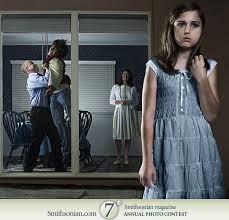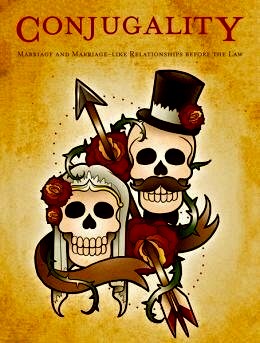Trevor Todd and Jackson Todd have over 60 years combined experience in handling contested wills and estates, including acting for victims of family abuse that turn them into either a black sheep or a scapegoat or both.
Contested estates in BC are rife with black sheep and scapegoats.
The purpose of this article is to examine that phenomena. It crosses virtually all aspects, boundaries, and strata of society. More likely than not, when each family sits down for a traditional celebration, at least one person is conspicuous by his or her absence—or presence.
Webster’s dictionary defines a black sheep as “a person who causes shame or embarrassment because of a deviation from the accepted standards of his or her group.”
The same dictionary defines a scapegoat as “a person or group made to bear the blame for others or to suffer in their place.”
Neither black sheep nor scapegoat is defined in legal dictionaries. Although there are several references to those types of individuals throughout case law, most do not try to define the concept.
A psychologist might define a black sheep as a member of a rigidly triangulated family who holds the rest of the family tightly together by being identified and assigned the role as the bad/problematic/deviant one who causes all the family’s problems.
The ruler of the family typically initiates the charges and thereafter assigns both label and blame. Siblings often simply buy in, initially as a route of least resistance, and perhaps out of self-defence so as not to become the target, and then ultimately as believers of the alleged faults.
Psychologists report that many black sheep/scapegoats will attest to the fact that they were singled out for blame or humiliation at an early age, with no explanation or reasoning for the decision offered to them.
Black Sheep v. Scapegoats: What’s the Difference?
Although there are different origins for the strict meanings of black sheep and scapegoats, for the purposes of this article, within the context of dysfunctional families, I shall use them almost interchangeably.
For the sheep, the term originated from the fact that the occasional black sheep would be born into a herd of predominantly white sheep; the black sheep were far less marketable. At times they were even considered religiously sinister.
A black sheep with its recessive gene literally and figuratively stands out in the white flock.
In dysfunctional families, black sheep are often viewed and treated as scapegoats within the family. Scapegoating involves the practice of singling out a party for unmerited negative treatment or blame; it can be likened to bullying.
In the context of dysfunctional families, the similarities between black sheep and scapegoats include the projection of feelings of blame, aggression, hostility, frustration, hurt, and so on upon one person. That negative behaviour is dramatically out of proportion to what might conceivably be warranted. The process of scapegoating provides a psychological boost to the perpetrator who uses that method to channel his or her own anger and frustration through the victim.
Dysfunctional families typically allow the scapegoat to remain in the family until he or she dares to speak up or complain, then the person is ostracized. Wild distortions of the truth are always prevalent.
The Inherent Problem of Dysfunctional Families
Dysfunctional families are almost the norm these days. By definition they have poor insight into their own behaviours and problems and will do almost anything to project “normal.” In reality, such families are frequently crippled by their poorly contained fears, addictions, mental disorders, and insecurities.
In this “Alice in Wonderland” topsy-turvy distorted version of family life, dysfunctional parents often avoid the obvious and very real problems within their families and instead choose a scapegoat child upon which all faults, problems, and family dysfunction are heaped.
This whipping boy (or girl) can seemingly never escape the assigned role, often delegated early in life and enforced by family pressure placed upon the other siblings to go along.
Another troubling aspect of the black sheep/scapegoat syndrome is that scapegoats who remain in this role usually find themselves perpetuating the syndrome in their own families because it is a learned behaviour.
Should the Black Sheep/Scapegoat Leave the Home?
The destiny of the black sheep/scapegoat is invariably to leave the family home, often on the advice of a counsellor or doctor. Counsellors profess that distance is by far a healthier option for those individuals in terms of recovering from the humiliation, shame, and self-loathing that has been their experience within the family.
It is interesting that the black sheep/scapegoat syndrome does not diminish over time; the individual(s) continue in the role as the root of all the family’s difficulties, even in absentia. The family is compelled to continue to assign blame and project shame onto the person(s) on whom the dysfunctional name tag is hung. Take for example the black sheep child who returned after a 25-year absence to reunite with her father before he died of lung cancer, only to be told by him to get out of the room because she had caused his lung cancer. The man had smoked for 50 years.
Estrangement and the Wills Variation Act
As previously stated, one of the overwhelming commonalities between a black sheep and the scapegoat is that they are often advised by medical practitioners or counsellors to learn to distance themselves from their family, for their own mental well-being.
That is based on the probable reality that the family’s behaviour as a group will never change. The ostracized child will continue to be abused psychologically and be unable to escape or change the role he or she has been assigned.
When testators disinherit a child on the basis of non-contact for many years, alleging estrangement, it may well be that a valid Wills Variation claim should or will override the defence of estrangement if the long-term minimal or total absence of contact was based on the advice of a medical doctor or a qualified counsellor.
It would particularly assist the disinherited victim if such medical/counselling advice were passed onto the family members who were causing the continuing abuse, on or after family counselling has failed. At least records would be available to show attempts were made at reconciliation.
The common consensus of the general public, and even some judges, is the view that the black sheep or scapegoat should simply never give up at attempting to reconcile with the family, and that the fault must be with the ostracized one, not the family. Thus the scapegoat is victimized not once, but twice.
It is inconceivable for anyone raised in a “normal” environment to comprehend that an estrangement could occur for anything but valid and rational reasons. In my practice, the majority of estrangements are almost always the result of petty issues and irrational reactions to them.
Court Awards for “Scapegoat Abuse”
A.D.Y. vs. M.Y.Y. and D.E.Y. (1994) 5 WWR 623 involves a case of egregious physical and mental abuse. His parents subjected their child to years of physical and mental abuse during his troubled childhood, in which he was, inter alia, hyperactive.
The plaintiff recovered damages of $260,000 in his action against his parents for damages for assault, battery, false imprisonment, and intentional infliction of mental suffering.
The term “scapegoat” was used by the expert witness. Dr. Briggs’ opinion is that the plaintiff was the family scapegoat.
No one will disagree with the fact that [A.]’s family experienced periods of considerable stress during [A.]’s 12 years of living within the family.
There will be some dispute as to [A.]’s contribution to that stress because of his Attention Deficit Disorder and hyperactivity, and his induction into the role of family scapegoat. There will be considerably more disagreement as to whether the problems [A.] presented (both because of his disorder and because of his reactivity to family stress and their management of him) justified measures taken against him that were unusually harsh. These measures were carried out in persistent and extreme ways to the point of becoming ritualized punishment and degradation in the name of management and behavioural control. A long term pattern of physical and emotional abuse is evident, carried out both by [A.]’s parents directly and indirectly by their promoting and endorsing physical and/or emotional abuse by certain of [A.]’s siblings.
Conclusion
Black sheep/scapegoats are often, not surprisingly, disinherited by their parents. The view of the black sheep/scapegoats is that they were singled out as very young children to be blamed for things that were neither their fault nor in their control or the accusations simply were not rational.
Those types of dysfunctional situations can arise in almost any type of home, but in particular in homes where there are narcissistic parents and/or alcohol, drug, or mental issues.
If a black sheep/scapegoat learns he or she is to be disinherited, the person should seek legal advice, as well as medical and psychological counselling to ascertain whether it would be in his or her best interest to attempt a reconciliation with the dysfunctional family, given the individual’s own history.
For many black sheep/scapegoats, there are simply two choices.
1. No family contact
2. Continued abusive family relations
While every child craves parental love and approval and vice versa, in the world of the dysfunctional family that is an impossible illusion, especially for those assigned black sheep/scapegoat status.
Further reading on blacksheep and scapegoats:
Cutting Ties with the Family and Estrangement
4 Unhealthy Roles Created in Dysfunctional Families
Dysfunctional Families: Scapegoat Child Sues Parents and Wins







